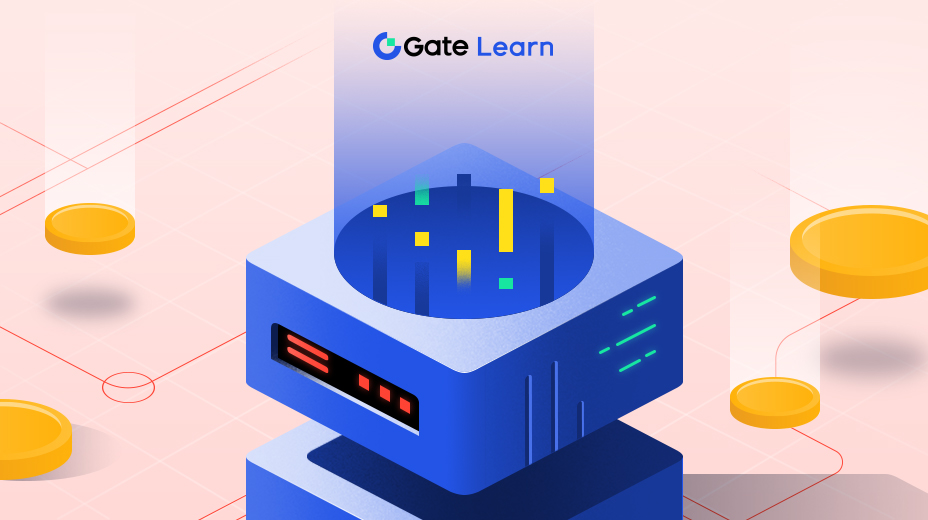區塊鏈架構的演進
本模組介紹了單體和模組化區塊鏈設計之間的核心差異。它解釋了為什麼區塊鏈架構很重要,像以太坊和比特幣這樣的單體系統存在的限制,以及模組化系統如何將執行、共識和數據可用性分解為獨立層。這一部分為了解為何模塊化對於擴展區塊鏈並保持去中心化至關重要提供了舞台。
為什麼區塊鏈架構很重要

區塊鏈網路的架構定義了它如何處理數據、實現共識、管理智能合約以及確保可用性。雖然區塊鏈通常被討論為分散化或加密安全性,但潛在的架構設計決定了一個區塊鏈能否擴展、支持新應用程序,或在使用量增長時保持真正的分散化。當網路面臨擁塞、高交易費用或集中化風險時,區塊鏈架構的重要性就顯而易見——這些問題直接源自區塊鏈的層級結構和互動方式。
在區塊鏈採用的早期階段,比特幣和乙太坊等網路以現在所謂的整體架構運行。這意味著單個區塊鏈處理所有三個基本功能 - 執行交易和智能合約,就事件順序達成共識,以及將交易數據提供給網路參與者。雖然此模型對於早期用例更簡單有效,但隨著需求的增加,它成為瓶頸。隨著越來越多的使用者在鏈上進行交易或與去中心化應用程式 (dApps) 交互,單片設計可能會導致輸送量變慢、gas 費用增加以及對驗證器和節點的硬體需求增加。這些技術限制限制了使用者和開發人員的可訪問性,最終影響了去中心化。
區塊鏈性能和成本的挑戰並不是孤立的問題,它們是網絡架構的系統性後果。例如,以太坊的普及也揭示了其單體設計的局限性。在高峰時期,用戶常常面臨極高的費用和延遲確認。這些問題並非由於編碼不良或用戶行為不佳,而是由於將執行、共識和數據可用性捆綁到單一系統的架構決策所致。像以太坊的滾動升級路線圖和第2層採用這樣的升級是直接的嘗試,以卸載部分工作量並朝向更模塊化的設計,而不是完全取代基礎鏈。
區塊鏈架構也影響了靈活性。緊密耦合的系統在協議層面上留下了很少的創新空間。在去中心化應用程序上工作的開發人員受制於主機區塊鏈的執行環境和吞吐量限制。相比之下,允許模塊化組合的架構——其中不同組件(如執行或數據可用性)可以獨立選擇——為開發人員提供了更大的自主權。這可能導致針對特定用例(如遊戲、金融或社交網絡)量身定制的更專業化鏈。
此外,建築設計對於去中心化有著長遠的影響。如果運行全節點需要強大的硬體,因為數據需求增加,那麼較少的個人將能夠參與,從而導致驗證中心化。一個仍然對輕節點可訪問,而不會犧牲信任假設的區塊鏈,更有可能保留一個多樣化和有彈性的網路。
總的來說,區塊鏈架構並非可以忽略或抽象化的技術細節。它是一個基礎性設計選擇,直接影響可擴展性、成本效益、開發者體驗和網絡安全性。隨著區塊鏈演變以支援更複雜和全球應用,從單體到模塊化架構的轉變正成為創新的核心焦點之一—而Celestia 是第一批在核心協議層體現這種轉變的項目之一。
什麼是單體區塊鏈?

單體區塊鏈是一種網絡,其中所有核心功能——交易執行、共識和數據可用性——都在單一的、垂直整合的系統內處理。這些網絡在同一個地方處理區塊鏈生命周期的每一個部分。與將職責分開到模塊化層中不同,同一組節點或驗證者執行所有操作。
比特幣和早期以太坊是單一區塊鏈最著名的例子。在這些系統中,礦工或驗證者負責驗證交易、達成共識,並將交易數據提供給網絡的其他部分。以太坊還在其主鏈上直接運行智能合約和去中心化應用程序(dApps),進一步增加每個完整節點的計算負載。
單體系統的好處
單體架構的一個好處是它的簡單性。單一協議層為部署應用程序提供了完整的環境。安全性集中在一個驗證器集合下,可以統一保護所有層。開發人員和用戶與一個連貫的堆棧互動,而無需了解不同層如何通信或協調。
可擴展性限制和中心化風險
然而,整體設計面臨著重大的性能和去中心化挑戰。網絡中的每個完整節點都必須處理每筆交易,存儲所有歷史數據,並執行每個智能合約。隨著活動量的增加,這將給節點帶來越來越大的計算和存儲負擔。隨著時間的推移,只有資金充足的參與者才能運行完整節點,進而導致基礎設施和治理的中央集權化。
擴展性也受到限制。為了保持去中心化,區塊大小和燃氣限制必須保持相對較低。但這限制了交易吞吐量,導致擁擠和高費用。以太坊在高使用量期間的網路擁擠是這些折衷方案的一個眾所周知的結果。
開發者的彈性有限
另一個單塊鏈的缺點是它們對開發人員提供的靈活性有限。執行環境、虛擬機、交易邏輯和費用模型都由基礎鏈確定。開發人員不能輕易引入新功能、執行模型或性能優化。任何協議升級都需要廣泛共識,通常需要硬分叉,這可能耗時且在政治上困難。
擺脫單塊限制
為了應對這些問題,以太坊和其他區塊鏈逐漸採用模塊化元素。例如,以太坊的Rollup-centric路線圖將執行委託給外部Rollup,而基礎鏈則保持共識和數據可用性。這樣做部分偏離了龐大的模塊化模型,突顯了對更靈活、可擴展區塊鏈架構日益增長的興趣。
模塊化區塊鏈設計
模塊化區塊鏈設計代表了從單體系統的全功能架構轉向。與單鏈處理所有責任不同,模塊化設計將區塊鏈功能分成不同的層或模塊。每個模塊負責特定角色—如執行交易、達成共識、存儲數據或結算交易—並且可以獨立優化。這種關注點的分離允許網絡更有效地擴展,同時保持靈活性和去中心化。
模塊化區塊鏈堆疊的核心組件

在模塊化架構中,區塊鏈堆棧通常分為四個功能層:執行、結算、共識和數據可用性。
執行層
執行層處理交易處理和智能合約邏輯。這是去中心化應用運行和商業邏輯執行的地方。開發人員可以選擇或構建針對特定用例量身定制的執行環境,無論是通用虛擬機還是自定義運行時。
結算層
結算層充當交易有效性的最絈仲裁者。它驗證執行層提交的證據,確保狀態轉換一致。在詐騙或無效交易的情況下,結算層還可以提供爭議解決機制。
共識層
共識層負責排序交易並生成區塊。該層確定正確的鏈,並確保所有參與節點就區塊序列達成一致。
數據可用性層
數據可用性層確保每個區塊的完整內容對所有網絡參與者可用。這可以防止惡意行為者隱藏或扣留驗證交易所需的數據。安全且可擴展的數據可用性層對支持外部執行環境(如 rollups)至關重要。
模塊化區塊鏈設計的優勢
模塊化架構相對單體系統引入了幾個關鍵優勢。首先,它通過設計實現了可擴展性。每個模塊可以根據自身的需求獨立擴展。例如,數據可用性層可以優化帶寬和存儲,而執行層可以專注於計算吞吐量。
其次,模塊化系統支持更大程度的去中心化。輕量級用戶端可以與單個模塊互動,而無需運行完整節點。例如,多虧了像數據可用性抽樣(DAS)這樣的創新,用戶可以驗證區塊數據是否可用,而無需下載整個區塊。這降低了參與門檻,支持更廣泛的驗證節點分佈。
第三,模塊化設計使得靈活性和創新成為可能。開發人員不再受限於單一基礎鏈的限制。他們可以混合和匹配執行環境,插入不同的數據可用性提供者,或自定義結算邏輯。這創造了一個更多元化的區塊鏈生態系統,每個都針對特定需求定制——從高速遊戲網絡到注重隱私的金融應用程式。





